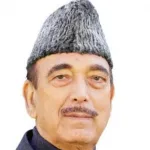Backyard poultry farming is the practice of raising chickens, ducks, or other poultry in a small scale, usually in the backyard of a home. It is a low-cost and sustainable way to produce eggs and meat for consumption, and can also serve as a source of income for families. Though the ducks, guinea fowl and turkey too are included but multiple strains of chicken remains a common phenomenon for rearing as far as J&K is concerned. Poultry birds like broilers and layers (75%) are reared using intensive methods characterised by controlled conditions of shelter, food and vaccines. By this method production of meat and eggs is achieved in larger quantity. Raring the indigenous chicken (25%) in free range or in backyard farming by rural households is an extensive method.
The Indian poultry industry size in 2022 reached to USD 28.18 billion and is expected to reach USD 44.97 billion by 2028. Conditions of Poultry sector in Jammu and Kashmir is not promising with Rs1300 core annually spend on purchase of broilers, layers and eggs. The sector is expected to grow after unveiling of 2023 government approved road map for sustainable Poultry development under mission for Holistic Development of Agriculture, Allied Sectors. Till 1960 the age old practice of backyard Poultry was only a concept. Raring 15-20 birds in free range by a rural household was seen as a cultural activity and a participatory practice involving the children, women and elderly making it a sustainable dietary source to the family. With the growing demand of eggs and meat, this cultural activity was slowly transformed into agribusiness. The transformation was good if the practice of backyard poultry would have been untouched and growing but it declined owing to multiple and varied reasons.
With the growth of agriculture sector especially vegetables the rural households were caught in dissonance, about how to rare a free range, low egg lying bird without damaging the crops. It would have been a different scenario, had the inputs been provided on time. There were limited efforts on financing the improved strains of birds, framing of bird raring models, helping the rural households in exploring the market for Surplus produce. Major focus on development of poultry has been on broilers, and Layers, though having potential of fulfilling the meat demands they are prone to many risks compared to birds reared in free range. It was after several years’ people have started pondering about the practice of backyard poultry has to be revived to meet the dietary requirements of the family and to augment the family income. Developmental practitioners, veterinarians and the professionals of rural poverty alleviation institutions, who are striving for the revival of the poultry have to be optimistic as it is believed that rural Societies display innate tendency for revival of their traditional livelihoods, if provided with adequate support, capacitated and trained on scientific models for revitalisation and leading them on path to the capital.
From the last few years it has been observed that people are exploring the options for revival of backyard poultry , apart from developing the local indigenous birds , people have started exploring the options of raring the birds like RIR ( Rode Island Red), Kali Massi ( Kadaknath) , Vaneraja , keystone golden , genius fowl and turkey etc. Poultry science experts present various renewed methods pivotal for backyard poultry development. Horti-poultry model is one of the integrated farming methods, which is characterised by raring birds in fruit orchards. The benefit of this practice is multiple pronged, ranging from natural de-weeding of orchid to ensuring organic fertilisation of soil through bird dropping.
For the rural households who own small land, closing some square feet of land with tin sheets and making a night shelter within can be a niche to hundreds of backyard birds. Though the Government strives to promote and develop the poultry sector by encouraging farmers Providing Subsidies on DOC purchases along with capacity building through Animal Husbandry Department and twin Agricultural Universities but the desired results are far from any substantial achievement. Adopting, upgrading or reviving a livelihood is failure until it is not actually espoused at the community level after breaking the mental barriers. The carrot and stick method fails here. For desired results there is need for social mobilisation and persuasion at the community level through techniques like PLA (Participatory Learning and Action).
Self Help Groups especially the Homogeneous Women Self Help Group, who believe in principle of Community based identification and adoption of livelihoods of their choice and skill, can prove decisive in revival of backyard poultry in Jammu and Kashmir. The resurgence of backyard poultry farming has also had positive effects on the environment. By raising poultry on a small scale, farmers can reduce the amount of feed and water required per bird, and also reduce the amount of waste produced. This can help to conserve resources and reduce environmental impacts.
States like Tamil Nadu have already experimented in developing country chicken by assisting the Self Help Groups with the separate financial package. The secondary & tertiary Federations of these Self Help Groups can keep revival of Backyard poultry as one of the agenda points in the fortnightly Executive committee meetings. Since the convergence is the most stressed word in today’s bureaucracy, the MIPs (Micro Investment Plans) on backyard poultry of these Self Help Groups can be acknowledged and aided by the departments and Institutions like Krishi Vigyan Kendra, Department of Animal Husbandry, SKUAST, NABARD and Rural Livelihood Missions. These institutions have mandate to provide the requisite capacity building, Financial Support, marketing linkages and inputs for branding and packaging.
The experts have role to play in dissemination of knowledge for disease management and control. Those Rural Households who are already practicing the backyard poultry farming are facing several unredressed issues. Since the backyard poultry is the practice to rear the birds in low numbers unlike the other commercial methods here reach to the market remains unexplored. The intervention from NABARD and other agencies for promoting the FPOs for the backyard poultry has all the potential to be success. FPO or farmer producer organisation could be a legal entity of primary farmers it will help them for better marketing. Though reared in free Range the poultry birds are free to consume the kitchen waste, and also effective in de-weeding and scavenging. In Kashmir the winter poses great risk to their feeding habits, the farmers face the severe difficulty in getting the feed on low rates. To counter the expenditure on feed farmers deliberately lower the flock size. Discounts on poultry feed will be an encouraging step. Quality backyard products usually the eggs are sold in market are ungraded and in poor packaging , equipping the farmers with the Knowledge and technique of proper grading and packaging will lure the customers.
Overall, the work of self-help groups in several states of India has been instrumental in promoting backyard poultry farming as a viable option for families looking to increase their income and food security. With the cohesive and continued institutional support, backyard poultry farming can play an important role in improving the lives of families in the rural communities of J&K.
(Author works as District Programme Manager with Rural Livelihoods Mission (JK). Email: [email protected])





